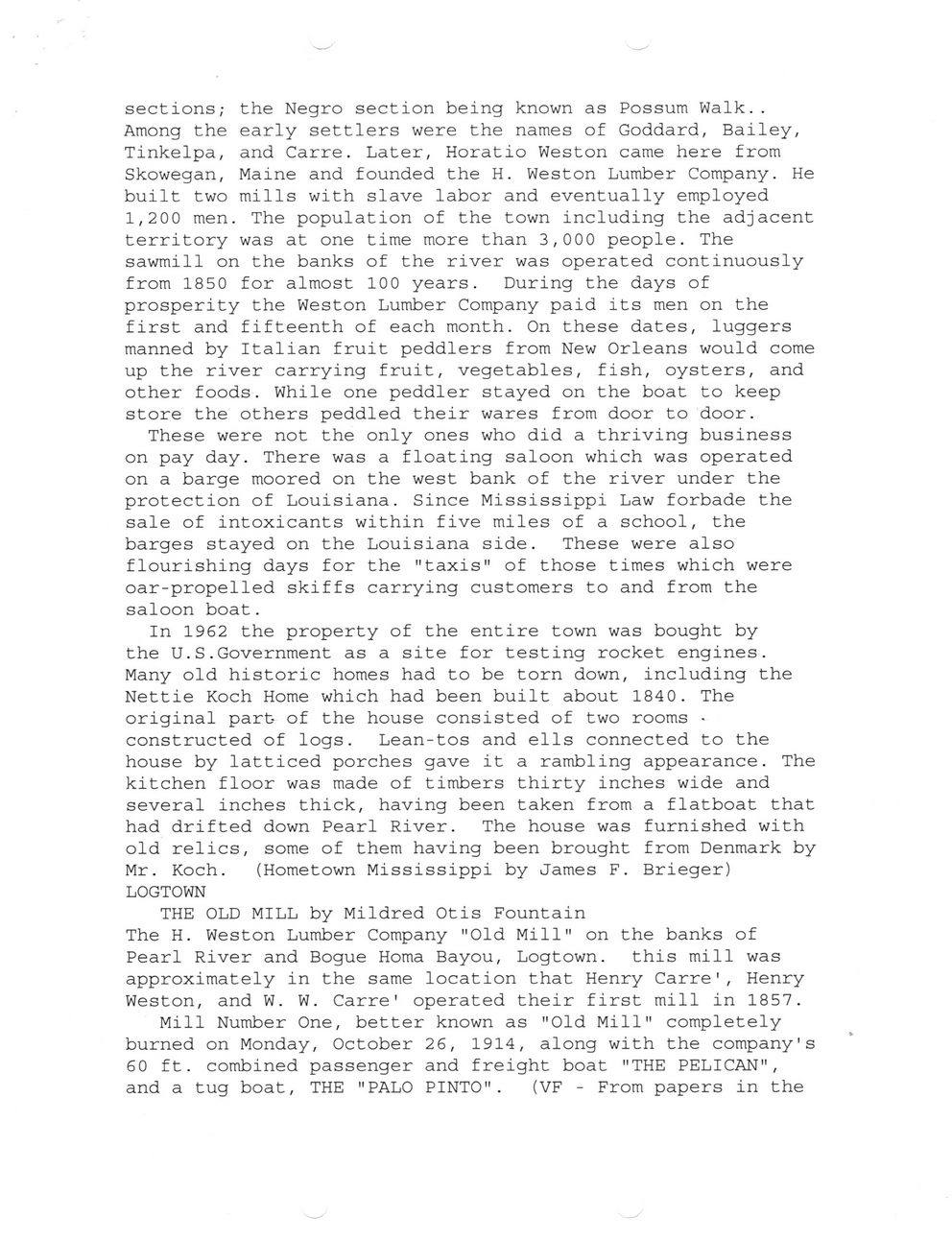This text was obtained via automated optical character recognition.
It has not been edited and may therefore contain several errors.
sections; the Negro section being known as Possum Walk.. Among the early settlers were the names of Goddard, Bailey, Tinkelpa, and Carre. Later, Horatio Weston came here from Skowegan, Maine and founded the H. Weston Lumber Company. He built two mills with slave labor and eventually employed 1,200 men. The population of the town including the adjacent territory was at one time more than 3,000 people. The sawmill on the banks of the river was operated continuously from 1850 for almost 100 years. During the days of prosperity the Weston Lumber Company paid its men on the first and fifteenth of each month. On these dates, luggers manned by Italian fruit peddlers from New Orleans would come up the river carrying fruit, vegetables, fish, oysters, and other foods. While one peddler stayed on the boat to keep store the others peddled their wares from door to door. These were not the only ones who did a thriving business on pay day. There was a floating saloon which was operated on a barge moored on the west bank of the river under the protection of Louisiana. Since Mississippi Law forbade the sale of intoxicants within five miles of a school, the barges stayed on the Louisiana side. These were also flourishing days for the "taxis" of those times which were oar-propelled skiffs carrying customers to and from the saloon boat. In 1962 the property of the entire town was bought by the U.S.Government as a site for testing rocket engines. Many old historic homes had to be torn down, including the Nettie Koch Home which had been built about 1840. The original part- of the house consisted of two rooms -constructed of logs. Lean-tos and ells connected to the house by latticed porches gave it a rambling appearance. The kitchen floor was made of timbers thirty inches wide and several inches thick, having been taken from a flatboat that had drifted down Pearl River. The house was furnished with old relics, some of them having been brought from Denmark by Mr. Koch. (Hometown Mississippi by James F. Brieger) LOGTOWN THE OLD MILL by Mildred Otis Fountain The H. Weston Lumber Company "Old Mill" on the banks of Pearl River and Bogue Homa Bayou, Logtown. this mill was approximately in the same location that Henry Carre', Henry Weston, and W. W. Carre' operated their first mill in 1857. Mill Number One, better known as "Old Mill" completely burned on Monday, October 26, 1914, along with the company's 60 ft. combined passenger and freight boat "THE PELICAN", and a tug boat, THE "PALO PINTO". (VF - From papers in the

Logtown Logtown Revisited (04)